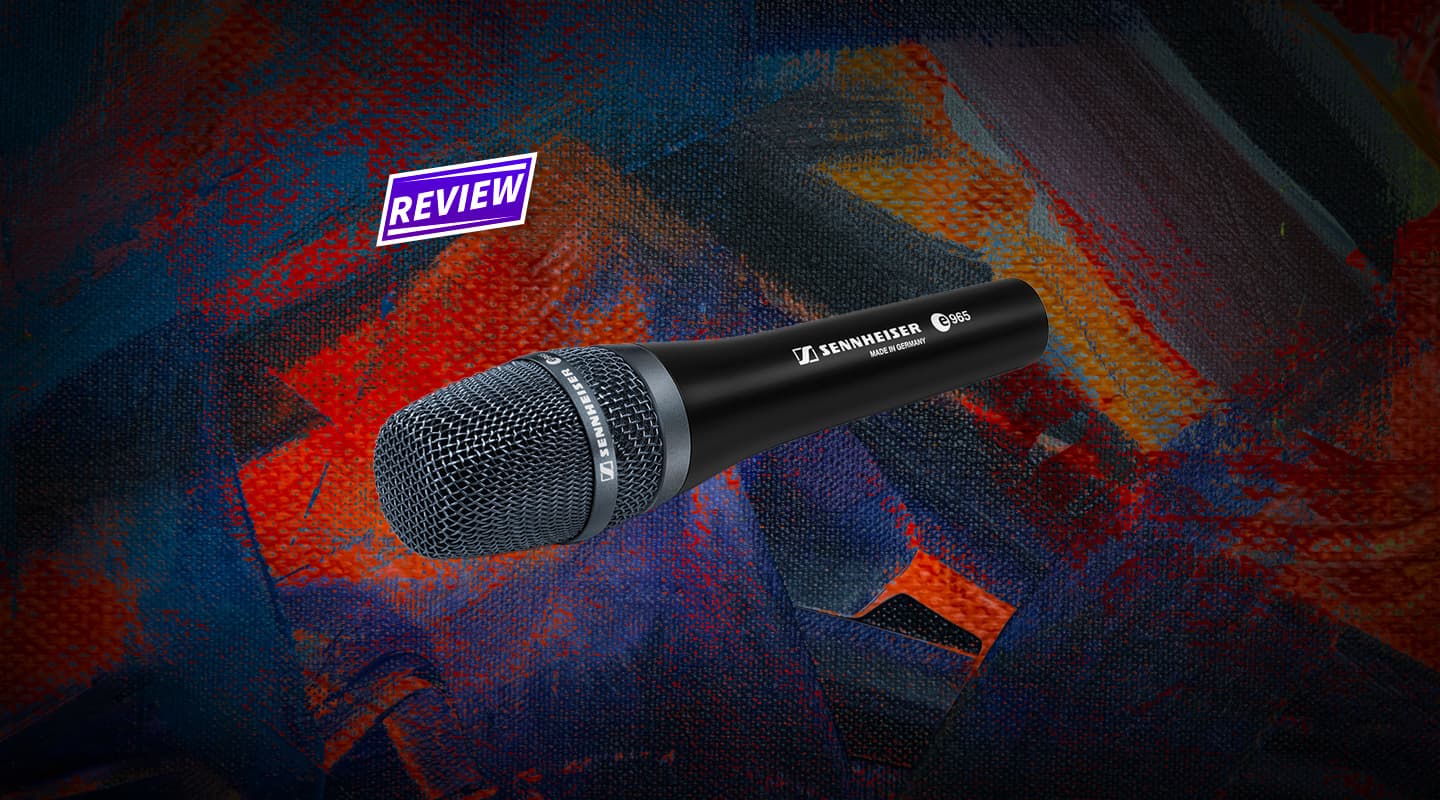
Review: Sennheiser e965
It’s one of a new breed of large-diaphragm hand-held condensers and it sounds superb.
Once unheard of for live vocals, condenser microphones are now commonplace on stages throughout the world. Usually based on small diaphragm capsules re-tuned for hand-held vocal use, these new mics sound better on many voices than their dynamic equivalents – providing more detail and an extended frequency response. Studio recording quickly confirms that large diaphragm condensers generally sound even better than small diaphragms, with a richer midrange and bigger bottom end. It’s this type of capsule that hides behind the grille of the new Sennheiser Evolution e965.
The e965 is a dual-diaphragm design that sports both cardioid and super-cardioid pick-up patterns, the switch for which is only accessible by unscrewing the grille, where you’ll also find switches for the high-pass filter and a 10dB pad. The specifications of the e965 are impressive with a quoted 40Hz – 20kHz frequency response, a maximum SPL of 152dB (with the pad in) and an equivalent noise level of 21dB (A-weighted), which is reasonably quiet. The response curves for both pick-up patterns look almost flat from 100Hz – 5kHz with some added level above that.
DUMBELL
The first thing I noticed about the e965 was the weight, it’s nearly 400g and solidly made. An hour on stage with this mic would give some of the singers I’ve met a decent workout! It looks serious too; it’s got a big body and a big head. But while its black finish looks very impressive, it’s quite slippery and, combined with the weight, it would be easy to drop. The supplied clip creates another dropping risk; it’s hard to get it to accept the mic without a concerted effort and although pushing the mic down into the clip from above seems to be the best way, it’s an awkward action and springs out of the clip too easily if bumped.
Plugged into a PA the e965 fired up sounding boomy. Off with the top and on with the HPF and the boom disappeared. Considering it’s a vocal mic it probably should be supplied out-of-the-box with the HPF engaged. It makes a big difference and some users may not immediately find the switch. Those complaints aside, this is a great sounding mic; the high frequencies are very smooth with terrific detail while the mids are strong and clear. The bottom end is big; there’s a pronounced proximity effect when right on the mic but it’s either usable or controllable with EQ, and plosives (pops) are very well managed by the mic’s hardy grille. The pick-up pattern is quite wide and extends down the side of the grille before dropping off sharply. The e965 is also very resistant to feedback with 2 – 4kHz getting edgy first in the monitors. The difference between the cardioid and super-cardioid patterns is subtle.
SMOOTH PERFORMANCE
Used with a band, on lead vocals the e965 was a pleasure; female vocals were clear with easy volume on breathy, intimate parts and a lack of harshness on strident notes. Even better, sibilance was accurately conveyed and never exacerbated. Male vocals worked just as well with big, rich low-mids and there was generally no need for EQ. Handling noise wasn’t noticeable either.
The Sennheiser and I recently worked at the Harrietville Bluegrass convention together, where every year we have a shoot-out of instrument mics that gets taken quite seriously by the musicians involved. Initially I didn’t use the mic for vocals (I had five vocal mics already and wanted to keep them the same brand/type to eliminate variables).
There are no D.I.s in bluegrass, everything gets miked and the choice of microphone is critical. Condensers generally sound best on stringed instruments but gain-before-feedback is vitally important so high quality vocal condensers are often used for instruments. Of all these, one of the hardest instruments to mic up is an acoustic guitar – try it with a rock band and listen for the feedback when it goes up in the monitors! In this difficult role the e965 worked a treat with its wide frequency response and detail providing a rich, full and clear image. Some additional low-cut was required to stop it booming out when the guitarists positioned the mic right in the middle of the sound-hole for solos, but overall the sound was great. Excellent results were also obtained using it on banjo and mandolin with no EQ.
While designed as a specialist vocal mic for on-stage use, the e965 can also be used for recording, and to great effect. It’s quiet and in the studio it’s easier to appreciate the mic’s wide frequency range and low distortion. I got good results using it to record a vocalist who wanted to track in the same room as the band and it also performed very well placed in front of a guitar amp. Above a drum kit it also worked a treat but I wasn’t game to try it close to the toms for fear of it being struck by a stray stick, but I suspect it would have sounded great there too.
The Sennheiser e965 is an excellent vocal/instrument mic. It’s hard to fault the sound quality although I can envisage a potential problem with the switches. These wouldn’t normally be changed during a show, of course, but I can imagine it happening: a singer changing the pick-up pattern to try to improve the stage sound for instance. The pattern selector only makes a small switching noise, as does the HPF but the 10dB pad makes a big thump when activated and it’s hard to tell which switch is which under stage lights. Perhaps a locking screw could have been provided for paranoid sound mixers like yours truly.
















RESPONSES